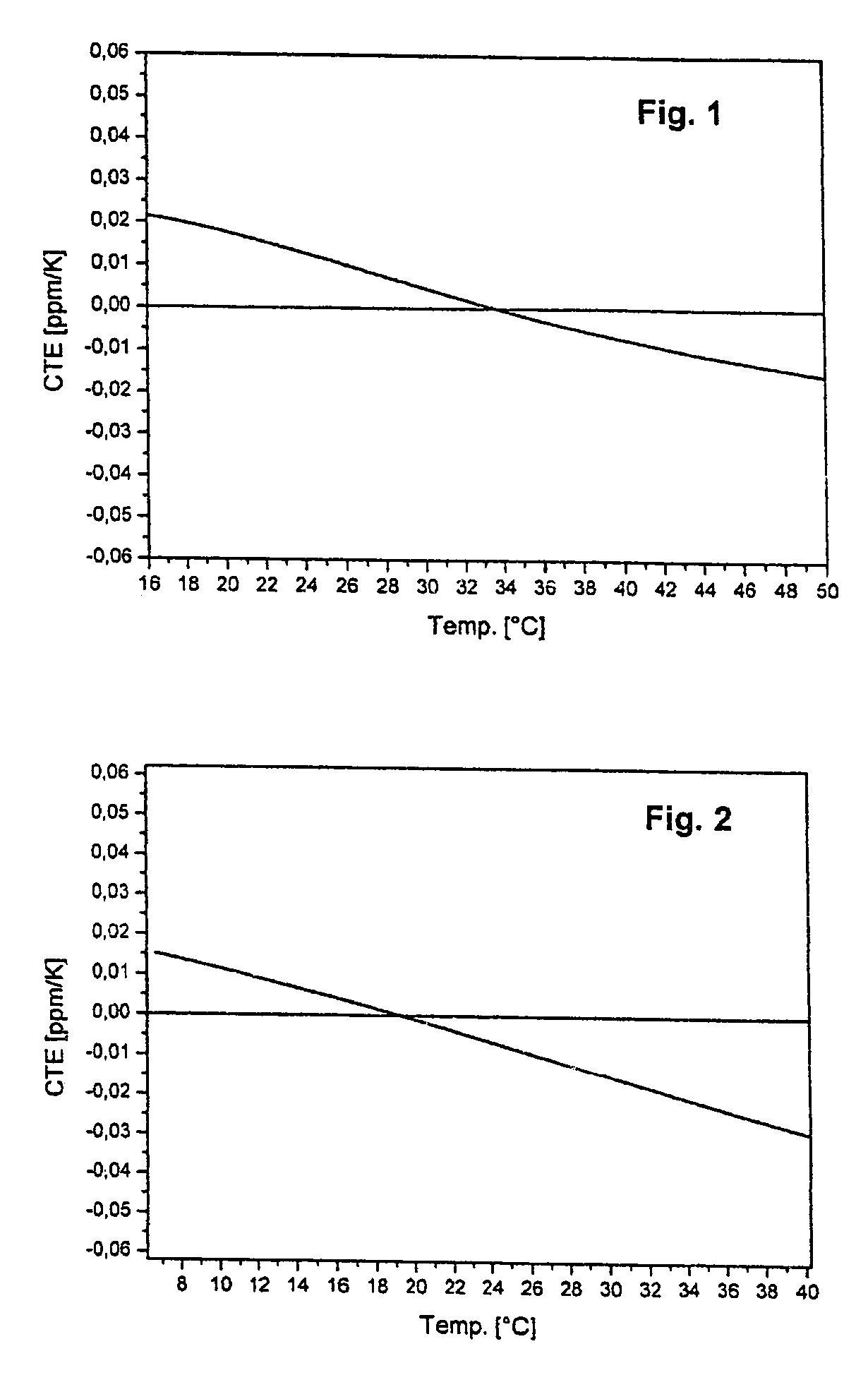Glass ceramic having a low thermal expansion
a glass ceramic and thermal expansion technology, applied in glass tempering apparatus, glass making apparatus, electrical apparatus, etc., can solve the problems of light loss, affecting the surface roughness in the hsfr range, and certain disadvantages of glass ceramic in respect of the requisite processability of the substra
- Summary
- Abstract
- Description
- Claims
- Application Information
AI Technical Summary
Benefits of technology
Problems solved by technology
Method used
Image
Examples
examples
Determination of CTE Values and CTE-T Curves
[0086]In glass ceramics, the average CTE is generally specified for a temperature range and can be determined by means of the following Equation (1):
CTE[t0;t]=(1 / l0)×(lt−l0) / (t−t0)=Δl / (l0×Δt) (1)
where t0 is the initial temperature, t is the measuring temperature, l0 the sample body length at the initial temperature t0, lt is the sample body length at the measuring temperature t and Δl is the corrected length change of the sample body for a temperature change Δt.
[0087]In order to determine an average CTE, the length of a sample body of a glass ceramic is measured at an initial temperature t0, the sample body is heated to a second temperature t and the length lt at this temperature is measured. The above Formula (1) gives the average CTE[t0;t] for the temperature range t0 to t. The thermal expansion may be determined by means of dilatometry, that is to say determining the length change of a measurement sample as a function of temperature. A...
PUM
| Property | Measurement | Unit |
|---|---|---|
| temperature | aaaaa | aaaaa |
| surface roughness HSFR | aaaaa | aaaaa |
| temperature | aaaaa | aaaaa |
Abstract
Description
Claims
Application Information
 Login to View More
Login to View More - R&D
- Intellectual Property
- Life Sciences
- Materials
- Tech Scout
- Unparalleled Data Quality
- Higher Quality Content
- 60% Fewer Hallucinations
Browse by: Latest US Patents, China's latest patents, Technical Efficacy Thesaurus, Application Domain, Technology Topic, Popular Technical Reports.
© 2025 PatSnap. All rights reserved.Legal|Privacy policy|Modern Slavery Act Transparency Statement|Sitemap|About US| Contact US: help@patsnap.com

